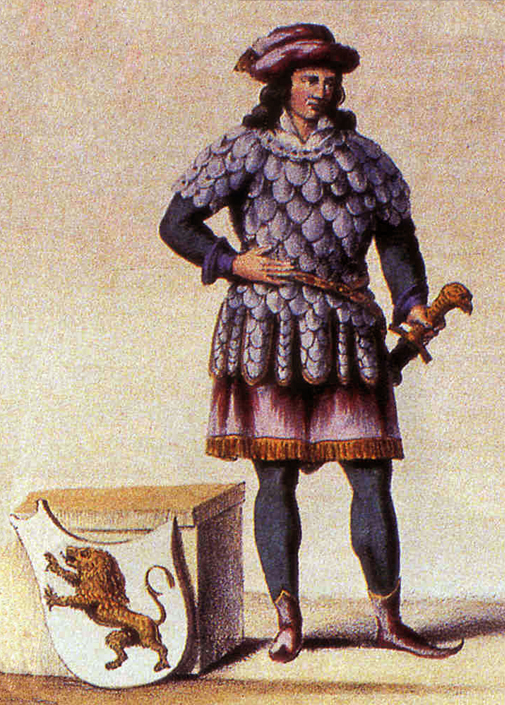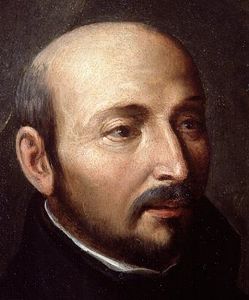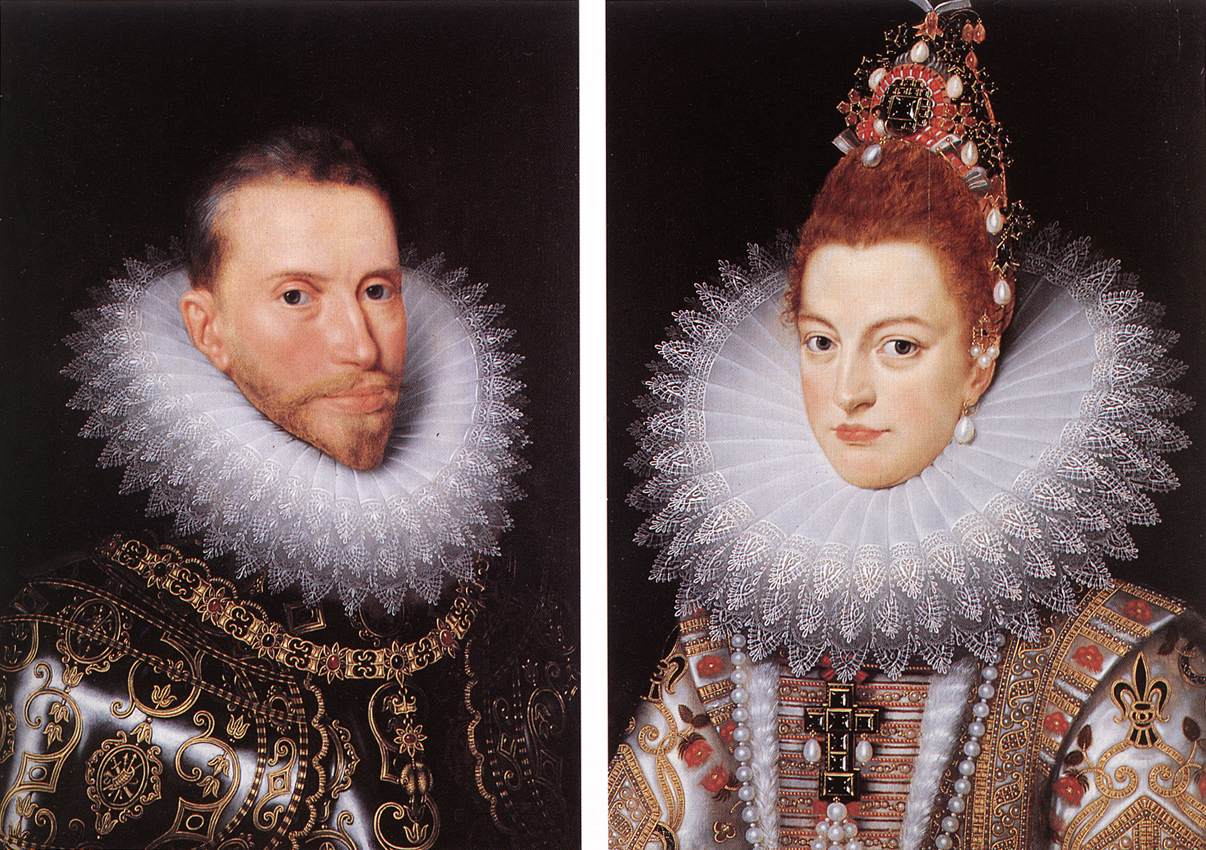|
Richard Stanihurst
Richard Stanyhurst (or Stanihurst) (1547–1618) was an Anglo-Irish alchemist, translator, poet and historian, who was born in Dublin. Life His father, James Stanyhurst, was Recorder of Dublin, and Speaker of the Irish House of Commons in 1557, 1560 and 1568. His grandfather was Nicholas Stanihurst, Mayor of Dublin in 1543. His mother was Anne Fitzsimon, daughter of Thomas Fitzsimon, Recorder of Dublin. Richard was sent to Peter White's Kilkenny College after which, in 1563, he continued to University College, Oxford, where he took his degree five years later. At Oxford, he became intimate with Edmund Campion. After leaving the university he studied law at Furnival's Inn and Lincoln's Inn. He contributed in 1587 to ''Holinshed's Chronicles'' "a playne and perfecte description" of Ireland, and a ''History of Ireland during the reign of Henry VIII'', which were severely criticized in Barnabe Rich's ''New Description of Ireland'' (1610) as a misrepresentation of Irish affair ... [...More Info...] [...Related Items...] OR: [Wikipedia] [Google] [Baidu] [Amazon] |
Anglo-Irish People
Anglo-Irish people () denotes an ethnic, social and religious grouping who are mostly the descendants and successors of the English Protestant Ascendancy in Ireland. They mostly belong to the Anglican Church of Ireland, which was the State religion, established church of Ireland until 1871, or to a lesser extent one of the English Dissenters, English Dissenting churches, such as the Methodism, Methodist Church, though some were Catholic Church, Catholics. They often defined themselves as simply "British", and less frequently "Anglo-Irish", "Irish" or "English". Many became eminent as administrators in the British Empire and as senior Irish military diaspora#Britain, army and naval officers since the Kingdom of England and Kingdom of Great Britain, Great Britain were in a real union with the Kingdom of Ireland for over a century, before politically uniting into the United Kingdom of Great Britain and Ireland in 1801. The term is not usually applied to Presbyterianism, Presbyteri ... [...More Info...] [...Related Items...] OR: [Wikipedia] [Google] [Baidu] [Amazon] |
Bishopric Of Liège
In church governance, a diocese or bishopric is the ecclesiastical district under the jurisdiction of a bishop. History In the later organization of the Roman Empire, the increasingly subdivided provinces were administratively associated in a larger unit, the diocese (Latin ''dioecesis'', from the Greek term διοίκησις, meaning "administration"). Christianity was given legal status in 313 with the Edict of Milan. Churches began to organize themselves into dioceses based on the civil dioceses, not on the larger regional imperial districts. These dioceses were often smaller than the provinces. Christianity was declared the Empire's official religion by Theodosius I in 380. Constantine I in 318 gave litigants the right to have court cases transferred from the civil courts to the bishops. This situation must have hardly survived Julian, 361–363. Episcopal courts are not heard of again in the East until 398 and in the West in 408. The quality of these courts was ... [...More Info...] [...Related Items...] OR: [Wikipedia] [Google] [Baidu] [Amazon] |
Burlesque
A burlesque is a literary, dramatic or musical work intended to cause laughter by caricaturing the manner or spirit of serious works, or by ludicrous treatment of their subjects."Burlesque" ''Oxford English Dictionary'', , accessed 16 February 2011 The word is loaned from French and derives from the Italian ', which, in turn, is derived from the Italian ' – a joke, ridicule or mockery. Burlesque overlaps with , and [...More Info...] [...Related Items...] OR: [Wikipedia] [Google] [Baidu] [Amazon] |
Prosody (poetry)
In poetry, metre ( Commonwealth spelling) or meter (American spelling; see spelling differences) is the basic rhythmic structure of a verse or lines in verse. Many traditional verse forms prescribe a specific verse metre, or a certain set of metres alternating in a particular order. The study and the actual use of metres and forms of versification are both known as prosody. (Within linguistics, " prosody" is used in a more general sense that includes not only poetic metre but also the rhythmic aspects of prose, whether formal or informal, that vary from language to language, and sometimes between poetic traditions.) Characteristics An assortment of features can be identified when classifying poetry and its metre. Qualitative versus quantitative metre The metre of most poetry of the Western world and elsewhere is based on patterns of syllables of particular types. The familiar type of metre in English-language poetry is called qualitative metre, with stressed syllables coming ... [...More Info...] [...Related Items...] OR: [Wikipedia] [Google] [Baidu] [Amazon] |
Gabriel Harvey
Gabriel Harvey (1545 – 11 February 1631) was an English writer. Harvey was a notable scholar, whose reputation suffered from his quarrel with Thomas Nashe. Henry Morley, writing in the ''Fortnightly Review'' (March 1869), has argued that Harvey's Latin works demonstrate that he was distinguished by qualities very different from the pedantry and conceit usually associated with his name. Family Gabriel Harvey was the eldest son of John Harvey (d.1593), a yeoman farmer and master ropemaker from Saffron Walden, Essex, and his wife, Alice (d.1613). He had two younger brothers, Richard and John (d. July 1592), and a sister, Mercy. Education Harvey received his early education at the town's grammar school, and matriculated at Christ's College, Cambridge, in 1566. In 1570 he was elected fellow of Pembroke Hall. Here he formed a friendship with Edmund Spenser, who may have been his pupil. Promotion of hexameter verse Harvey wished to be "epitaphed as the Inventour of the English Hexa ... [...More Info...] [...Related Items...] OR: [Wikipedia] [Google] [Baidu] [Amazon] |
Anthony à Wood
Anthony Wood (17 December 1632 – 28 November 1695), who styled himself Anthony à Wood in his later writings, was an English antiquary. He was responsible for a celebrated ''Hist. and Antiq. of the Universitie of Oxon''. He meticulously researched and documented the history of Oxford, producing significant works such as the ''Historia et Antiquitates Universitatis Oxoniensis'' and the ''Athenae Oxonienses''. Despite criticism for errors and suspected biases, his works remain invaluable. Wood had free access to university records, consulted with notable scholars, and faced controversy, including banishment from the University of Oxford. Unmarried, he led a life devoted to scholarship and antiquarian pursuits. Early life Anthony Wood was born in Oxford on 17 December 1632, as the fourth son of Thomas Wood (1581–1643), BCL of Oxford, and his second wife, Mary (1602–1667), daughter of Robert Pettie and Penelope Taverner. His father, who was born in Islington and attended Br ... [...More Info...] [...Related Items...] OR: [Wikipedia] [Google] [Baidu] [Amazon] |
Brussels
Brussels, officially the Brussels-Capital Region, (All text and all but one graphic show the English name as Brussels-Capital Region.) is a Communities, regions and language areas of Belgium#Regions, region of Belgium comprising #Municipalities, 19 municipalities, including the City of Brussels, which is the capital of Belgium. The Brussels-Capital Region is located in the central portion of the country. It is a part of both the French Community of Belgium and the Flemish Community, and is separate from the Flemish Region (Flanders), within which it forms an enclave, and the Walloon Region (Wallonia), located less than to the south. Brussels grew from a small rural settlement on the river Senne (river), Senne to become an important city-region in Europe. Since the end of the Second World War, it has been a major centre for international politics and home to numerous international organisations, politicians, Diplomacy, diplomats and civil servants. Brussels is the ''de facto' ... [...More Info...] [...Related Items...] OR: [Wikipedia] [Google] [Baidu] [Amazon] |
Jesuits
The Society of Jesus (; abbreviation: S.J. or SJ), also known as the Jesuit Order or the Jesuits ( ; ), is a religious order (Catholic), religious order of clerics regular of pontifical right for men in the Catholic Church headquartered in Rome. It was founded in 1540 by Ignatius of Loyola and six companions, with the approval of Pope Paul III. The Society of Jesus is the largest religious order in the Catholic Church and has played significant role in education, charity, humanitarian acts and global policies. The Society of Jesus is engaged in evangelization and apostolic ministry in 112 countries. Jesuits work in education, research, and cultural pursuits. They also conduct retreats, minister in hospitals and parishes, sponsor direct social and humanitarian works, and promote Ecumenism, ecumenical dialogue. The Society of Jesus is consecrated under the patron saint, patronage of Madonna della Strada, a title of the Blessed Virgin Mary, and it is led by a Superior General of ... [...More Info...] [...Related Items...] OR: [Wikipedia] [Google] [Baidu] [Amazon] |
William Stanyhurst
William Stanyhurst (1601 – 1663) was a Belgian Jesuit of Irish parentage. He was a prolific author of Latin religious works, one of which, ''Dei immortalis in corpore mortali patientis historia'', was widely popular, and was translated into many languages. Life William was the younger son of the Dublin-born poet and historian Richard Stanyhurst and his second wife Helen Copley, who died during his infancy, and was born at Brussels on 15 June 1601. Alfred Poncelet, "Stanyhurst (Guillaume)", ''Biographie Nationale de Belgique''vol. 23(Brussels, 1924), 601–607. After studying at the Jesuit college in Brussels, he entered the Society of Jesus at Mechelen on 25 September 1617. His older brother Peter had joined the Jesuits a year before him, and died while serving as a chaplain to the Flemish fleet on 22 April 1627. After making his profession, William taught Latin composition and rhetoric at the Jesuit college in Kortrijk. He was ordained priest on 30 March 1630. He went on to ... [...More Info...] [...Related Items...] OR: [Wikipedia] [Google] [Baidu] [Amazon] |
Archduke Albert Of Austria (1559-1621)
Albert VII (; 13 November 1559 – 13 July 1621) was the ruling Archduke of Austria for a few months in 1619 and, jointly with his wife, Isabella Clara Eugenia, sovereign of the Habsburg Netherlands between 1598 and 1621. Prior to this, he had been a cardinal, Archbishop of Toledo, viceroy of Portugal and Governor General of the Habsburg Netherlands. He succeeded his brother Matthias as reigning archduke of Lower and Upper Austria, but abdicated in favor of Ferdinand II the same year, making it the shortest (and often ignored) reign in Austrian history. Early life Archduke Albert was the fifth son of Maximilian II, Holy Roman Emperor and Maria of Spain, daughter of Charles V, Holy Roman Emperor and Isabella of Portugal. He was sent to the Spanish Court at the age of eleven, where his uncle, King Philip II, looked after his education, where he was apparently quite intelligent. Initially he was meant to pursue an ecclesiastical career. On 3 March 1577 he was appointed cardina ... [...More Info...] [...Related Items...] OR: [Wikipedia] [Google] [Baidu] [Amazon] |
Holy Orders
In certain Christian denominations, holy orders are the ordination, ordained ministries of bishop, priest (presbyter), and deacon, and the sacrament or rite by which candidates are ordained to those orders. Churches recognizing these orders include the Catholic Church, the Eastern Orthodoxy, Eastern Orthodox (ιερωσύνη [''hierōsynē''], ιεράτευμα [''hierateuma''], Священство [''Svyashchenstvo'']), Oriental Orthodoxy, Oriental Orthodox, Anglican, Assyrian Church of the East, Assyrian, Old Catholic, Independent Catholic churches, Independent Catholic and some Lutheran churches. Except for some Lutherans and some Anglicans, these churches regard ordination as a sacrament (the ''sacramentum ordinis''). Christian denomination, Denominations have varied conceptions of holy orders. In some Lutheran and Anglican churches the traditional orders of bishop, priest and deacon are bestowed using ordination rites contained within ordinal (liturgy), ordinals. The exten ... [...More Info...] [...Related Items...] OR: [Wikipedia] [Google] [Baidu] [Amazon] |
El Escorial
El Escorial, or the Royal Site of San Lorenzo de El Escorial (), or (), is a historical residence of the king of Spain located in the town of San Lorenzo de El Escorial, up the valley ( road distance) from the town of El Escorial, Madrid, El Escorial and about northwest of the Spanish capital Madrid. Built between 1563 and 1584 by order of King Philip II of Spain, Philip II (who reigned 1556–1598), El Escorial is the largest Renaissance architecture, Renaissance building in the world. It is one of the Spanish royal sites and functions as a monastery, basilica, royal palace, pantheon, library, museum, university, school, and hospital. El Escorial consists of two architectural complexes of great historical and cultural significance: the royal monastery itself and ''La Granjilla de La Fresneda de El Escorial, Madrid, La Granjilla de La Fresneda'', a royal hunting lodge and monastic retreat about away. These sites have a dual nature: during the 16th and 17th centuries, they we ... [...More Info...] [...Related Items...] OR: [Wikipedia] [Google] [Baidu] [Amazon] |









